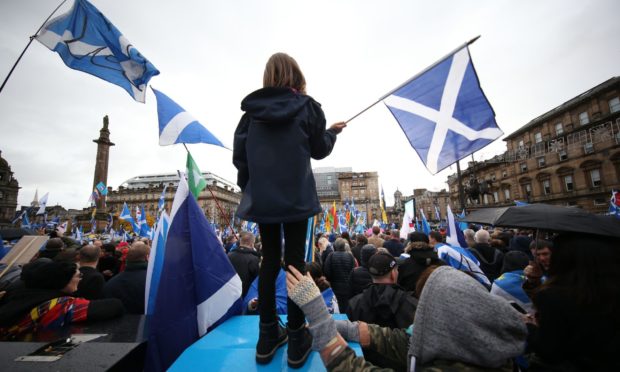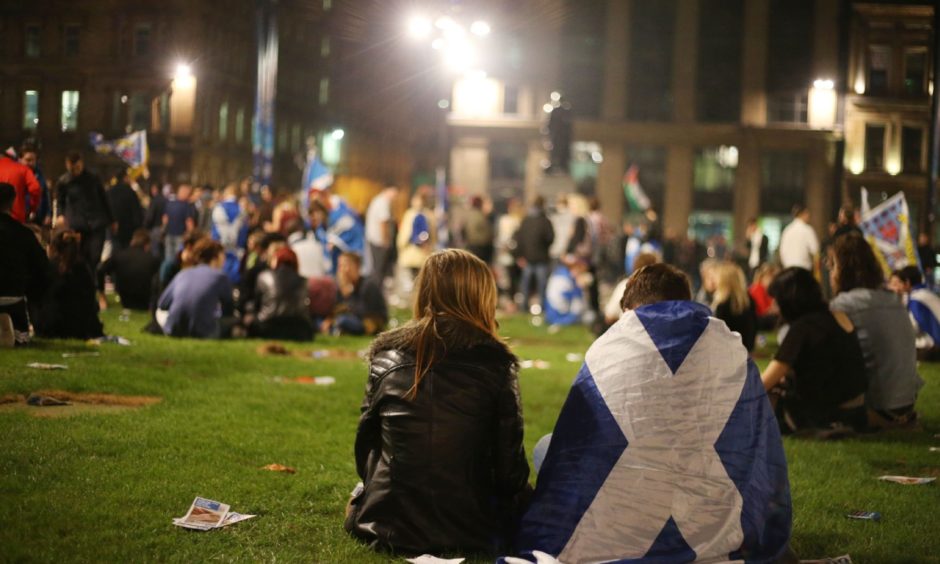A legal bid to establish whether Holyrood has the power to hold a second independence referendum without permission from Westminster has been dismissed as “hypothetical, academic and premature”.
Independence campaigner Martin Keatings argued voters should know the correct legal position before voting in May’s Scottish Parliament elections and sought backing for his view that MSPs already have the power to call such a vote.
In a 72-page opinion, Lady Carmichael said Mr Keatings lacked the standing to bring the case to the Court of Session but did not rule out the question of whether Holyrood has the power to unilaterally hold a referendum returning to court at a later stage.
The dismissal of the case will come as a blow to independence campaigners but was widely anticipated, including by Mr Keatings himself, who stated he always expected the case to end up in the appeals court in the Inner House.
A routemap to a referendum
Lady Carmichael’s ruling suggests that even if the case is not conclusive in the Inner House or Supreme Court, judges may still be asked to rule on the legality of any future referendum bill passed by the Scottish Parliament against the wishes of Westminster.
The 1998 Scotland Act that paved the way for devolution states the Union is a matter reserved to London but some academics have argued MSPs could hold a non-binding consultatory ballot on independence.
The SNP is expected to ask Westminster to transfer the necessary powers if it wins a predicted majority in May but prime minister Boris Johnson has repeatedly rejected calls for a second ballot.
SNP bosses published last month an 11-point routemap to a new vote that sets out how MSPs would pass their own referendum bill and dare the UK Government to challenge it in court if requests continue to be denied.
The Judgement of Lady Carmichael was expected to be worse than what it actually was. This is highly appealable and the Lord Advocate took a few knocks as well. Her opinion will be published here shortly: https://t.co/lghVKdCbCG pic.twitter.com/9J6TjW4r1O
— Martin J Keatings #VoteAFI2 (@MartinJKeatings) February 5, 2021
Lady Carmichael’s ruling
In her ruling on Friday, Lady Carmichael said the lack of concrete referendum legislation left the court unable to rule, but added: “I would have reached the same conclusion even if a draft bill were available for consideration.”
She went on: “It is, however, important, that matters which may properly be the subject of political debate and campaigning in the democratic process are permitted to unfold and be worked out in the political process, and that the courts intervene only when they need to do so to fulfil their function as guardians of the rule of law.
“The courts will clearly intervene to determine allegations of unlawfulness.
“Where, however, there is no allegation of unlawfulness, and the court is asked for a determination as to the state of the law in an area which is the subject of current political debate and controversy, it will be important to ensure that the question of whether an answer is required in order to protect the rule of law is addressed with rigour.”
Opinion of Lady Carmichael in #PeoplesAS30 #Keatings case is a long read but those crowing about a loss at 1st instance would do well to remember that both the #Wightman & #Cherry cases were lost at the 1st hurdle but won on appeal https://t.co/Al0kEnWbtk
— Joanna Cherry QC (@joannaccherry) February 5, 2021
‘Off to the Inner House we go’
Responding to Lady Carmichael’s decision, Mr Keatings said the ruling was “highly appealable” and does not represent a “silver spike through the heart”.
“While she may have dismissed the case on the ‘hypothetical, academic, premature’, it is clearly done on a neutral basis, and indeed in keeping with other cases of this nature,” Mr Keatings said.
“As I have said many times before, it is very unusual in this type of litigation to get an opinion in the Outer House and it almost always ends up in the Inner House.”
Mr Keatings also hit out at the timing of the release of the SNP’s 11-point plan, which he said had been “conveniently delivered to the public after the hearings” and left Lady Carmichael without “all the information she required to rule”.
“What we need now is a referral to a higher authority and that comes in the form of the Inner House of the Court of Session, and, as I said before, this was the expected next step – we’re in better shape than we thought we would be,” he said. “So, I’ve already instructed that process to commence and it’s off to the Inner House we go.”


